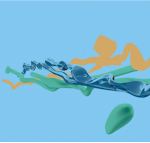By Sanna Kuisma
During my exchange at Toronto, I was able to attend a one-day event 'Spotlight: Responsive Design', arranged by FITC at premises of University of Toronto. The event had seven speakers, who went through the key things of how to start building responsive websites. Project management, teamwork, designer's and developer's co-operation as well as the client viewpoint were taken into account.
The speakers agreed, that content is still the king. Decision before starting the design process should be based on research, who are the users and how do they use the site. Making content easily accessible on mobile will likely pay off in higher mobile usage and sales.
Mobile first is the responsive design theory we're going to use in the future, at least if we want to reach those millions of mobile-only users. It also forces designers to focus on the most important content. Furthermore, responsive design changes teamwork dynamics by making designers and developers collaborate more closely. Whereas layouts were used to be handed from designer to developer to do the coding phase, responsiveness should be tested in online environment to perceive, how it works in practice, and then iterated many times.
 |
Chim Kan presenting Twitter Bootstrap
|
Despite the small mobile screen size, we're heading to bigger TV screens for browsing web. Retina displays also have to be taken into account by using solutions such as SVG images for logos. Some of the introduced development tools were Twitter Bootstrap, SASS and LESS for making coding faster and easier. Most important and interesting was to hear, which tools the speakers use in their work and how they handle the workflow of their projects.
Technologies will change, constantly progress and be again different in two years. Keeping updated of what happens in your area is highly important. Thanks for TAMK for covering the cost of my attendance, the event was super-interesting and very useful.
Find tweets about the event: #SpotlightRD
|||
The author is a student of our International Media Programme
Read more stories by and about IMPs, the Media students
|||

 Suomeksi
Suomeksi









